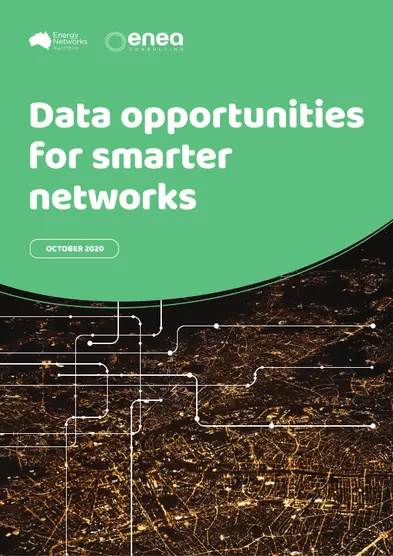Data opportunities for smarter networks

Data is a key enabler of the digital transformation of businesses, and digitalisation is revolutionising multiple sectors of the economy. This includes the energy sector.
Digitalisation and the future of electricity
In this sector, network service providers (NSPs) — who are responsible for planning, building, operating and maintaining electricity networks – are becoming increasingly data‐driven. This digitalisation is shaping network management to improve services and support the decarbonisation and decentralisation of the power system, in line with consumer expectations. This project aimed to collect, identify and harmonise views on priority areas for data applications in the management of electricity networks.
Data can help NSPs improve network management
Data improves the efficiency of network management and operations for a more affordable, reliable and safe electricity supply. Technological improvements and declining costs are increasing the volume and availability of data to optimise electricity network management and real‐time operations.
Technologies that capture new network information – like remote sensors – can provide NSPs with more accurate views of what is happening on their networks. Also, advancements in information communication technologies (ICT) mean NSPs can communicate and process data faster. Finally, cloud services and lower data storage costs facilitate the retention of large volumes of data. NSPs can then use this data to replace paper‐based or manual processes normally prone to human error.
Data can help NSPs meet the challenges of the energy transition
The decarbonisation and decentralisation of Australia’s electricity sector involves the integration of large‐scale renewable energy sources and distributed energy resources (DER). As the sector works through this transition, it faces various challenges. These include challenges for managing electricity networks at both the level of transmitting the energy, as well as at the level of distributing that energy to customers. Some of the key transmission and distribution challenges – and how NSPs can use data to mitigate them – are briefly outlined below. Effectively leveraging data can help NSPs work through these challenges and ultimately provide benefit to customers through the delivery of more sustainable, affordable, reliable and safe electricity.
Transmission challenges
At the transmission level, traditional synchronous generators — including coal, gas and hydro generators — help stabilise the power system during unexpected faults or disturbances. However, the integration of large‐scale intermittent renewable energy sources (large‐scale wind and solar) means an increase in the use of non‐synchronous power generation. This presents new challenges for managing power system security and reliability. To meet such challenges, transmission NSPs (TNSPs) can use data to determine the true impact on the grid of this increasing share of non‐synchronous generation. This can help them find ways of mitigating this impact and reducing the constraints currently placed on intermittent renewables.
Distribution challenges
At the distribution level, the power system has historically been designed to deliver electricity from centralised generators to customers.
Now, with the rise of the energy prosumer (a customer who both consumes and generates electricity), there is an increase in the deployment of DER such as rooftop solar PV units. These generate electricity from the customer’s side of the meter and create two‐way energy flows that can cause local network challenges. These include power quality disturbances. Also, they sit on the low‐voltage (LV) part of the network, a part distribution NSPs (DNSPs) have not typically had to monitor.
Managing and rectifying the voltage variations now caused on this part of the network – and other challenges of adapting a traditionally one‐way grid to manage more two‐way power flow – is a growing challenge. DNSPs are increasingly relying on data to manage it.
Emerging business models
To leverage data for network management, new business models and frameworks are also emerging, and these involve multiple energy market players.
A prominent example is the transition of DNSPs to a distribution system operator (DSO) model. A DSO uses real‐time data to dynamically manage a network’s assets and distributed systems (such as rooftop solar PV), to support their optimal use. This in turn can further support the delivery of affordable, reliable and safe electricity that is also low carbon.